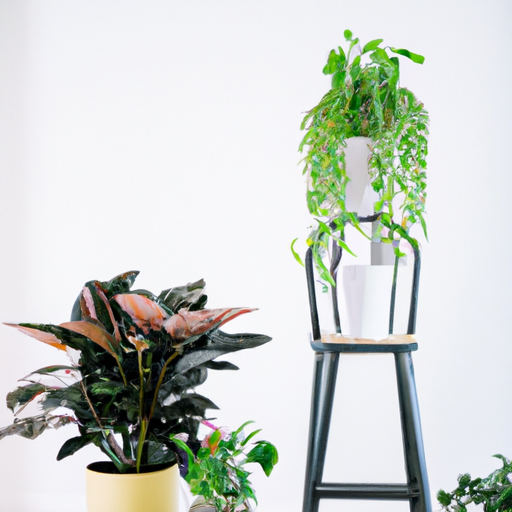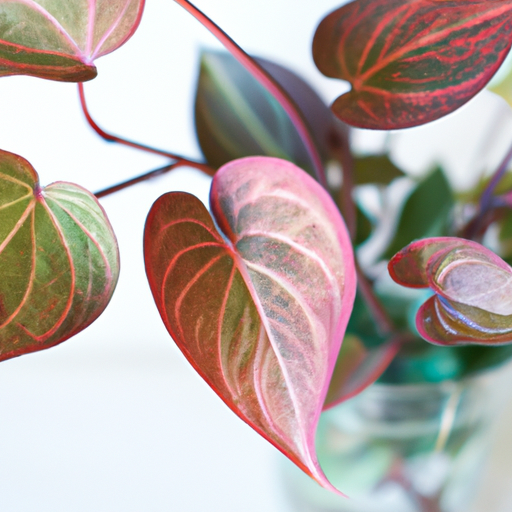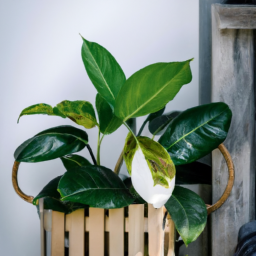
Benefits of Indoor Plant Wall Art and Displays
Introduction
Indoor plant wall art and displays have become increasingly popular in recent years, and for good reason. Not only do they add a touch of natural beauty to any space, but they also offer a range of benefits for both our physical and mental well-being. In this article, we will explore the numerous advantages of incorporating indoor plant wall art and displays into your home or office environment.
Improved Air Quality
Indoor air pollution is a growing concern in today’s world, with various pollutants such as volatile organic compounds (VOCs) released from furniture, carpets, and cleaning products. One of the major benefits of indoor plant wall art and displays is their ability to purify the air we breathe. Plants naturally absorb these harmful substances and release clean oxygen, creating a healthier and fresher atmosphere. Studies have shown that indoor plants can significantly reduce the levels of indoor air pollutants, leading to improved respiratory health and a lower risk of allergies and asthma.
In addition to removing toxins, plants also increase humidity levels in the air, which can alleviate dry skin, respiratory issues, and even reduce the transmission of airborne viruses. By introducing indoor plant wall art and displays, you can create a more comfortable and conducive environment for living or working.
Stress Reduction
Living in urban environments often exposes us to high levels of stress and anxiety. Indoor plant wall art and displays offer a natural remedy for these modern-day ailments. Research has shown that spending time in nature or even simply looking at images of nature can have a calming effect on our minds and bodies. Indoor plant wall art and displays bring elements of nature indoors, allowing us to reap the benefits of biophilia – our innate connection to the natural world.
The presence of plants has been proven to reduce stress, lower blood pressure, and increase productivity and focus. By incorporating indoor plant wall art and displays into our living or working spaces, we can create a more serene and tranquil atmosphere that promotes relaxation and well-being.
Enhanced Aesthetics
Indoor plant wall art and displays are not only beneficial for our health but also for the visual appeal of our spaces. They add a touch of natural beauty and bring life to otherwise dull walls. With a wide variety of plant species and arrangements available, you can easily find the perfect combination to suit your personal style and preferences.
Whether you prefer lush green foliage cascading down a vertical wall or a carefully curated display of colorful succulents, indoor plant wall art and displays offer endless possibilities for creating stunning visual focal points. They can transform any space into a vibrant and inviting oasis, making a statement and leaving a lasting impression on anyone who enters.
Conclusion
Indoor plant wall art and displays offer numerous benefits that go beyond mere aesthetics. From improving air quality and reducing stress to enhancing the overall ambiance of a space, the advantages of incorporating indoor plant wall art and displays are undeniable. Whether you are looking to create a healthier home environment or a more inviting office space, consider adding indoor plant wall art and displays to enjoy the beauty and benefits they bring.
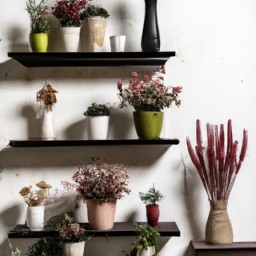
How to Choose the Perfect Indoor Plant Wall Art and Displays
Introduction
Indoor plants not only add beauty and freshness to our living spaces but also have numerous health benefits. They improve air quality, reduce stress levels, and create a calming atmosphere. To take your indoor plant game to the next level, consider incorporating plant wall art and displays. These unique and creative installations can transform any room into a lush oasis. In this guide, we will explore the steps to choose the perfect indoor plant wall art and displays.
Understanding Your Space
Before diving into the world of indoor plant wall art and displays, it is essential to understand your space. Assess the available wall area and consider factors such as lighting, temperature, and humidity. Some plants require bright indirect light, while others thrive in low-light conditions. Determine the climate of your space and choose plants accordingly.
Additionally, consider the size and height of your walls. Taller walls can accommodate larger installations, while smaller walls may require more compact displays. Take measurements to ensure the plants and artwork you choose will fit harmoniously in your space.
Lastly, consider the overall style and theme of your room. Do you prefer a modern, minimalist look or a bohemian, eclectic vibe? Understanding your space and its existing aesthetics will help you select plant wall art and displays that seamlessly integrate with your interior design.
Choosing the Right Plants
When it comes to indoor plant wall art and displays, the selection of plants is crucial. Here are some factors to consider when choosing the right plants:
1. Lighting Requirements
As mentioned earlier, different plants have varying lighting requirements. Some popular indoor plants that thrive in low-light conditions include pothos, snake plants, and ZZ plants. If your space has ample natural light, consider plants like fiddle leaf figs, monstera deliciosa, or bird of paradise.
2. Maintenance Level
Consider your commitment to plant care when choosing the right plants for your wall art and displays. Some plants require minimal maintenance, such as succulents and cacti, while others may need regular watering, pruning, or fertilizing. Assess your schedule and choose plants that align with your lifestyle.
3. Size and Growth Habit
Take into account the size and growth habit of the plants you select. Some plants, like trailing vines, are perfect for cascading down walls, creating a stunning visual effect. Others, like tall palms or ferns, can add height and drama to your display. Choose a mix of plants with varying sizes and growth habits to create an interesting and dynamic arrangement.
Choosing the Right Artwork
Once you have selected the perfect plants for your indoor plant wall art and displays, it’s time to choose the right artwork. The artwork you choose should complement and enhance the beauty of your plants. Here are some tips for selecting the right artwork:
1. Consider the Color Palette
Take a look at the colors of your plants and choose artwork that complements them. If your plants have vibrant green leaves, consider artwork with earthy tones or pops of complementary colors like blues or purples. If your plants have variegated leaves with multiple colors, opt for artwork with a neutral color palette to avoid overwhelming the space.
2. Reflect Your Personal Style
Your indoor plant wall art and displays should reflect your personal style and taste. Consider the overall theme of your space and choose artwork that aligns with it. If you prefer a minimalist look, opt for simple and abstract artwork. If you have a bohemian or eclectic style, choose artwork with bold patterns and vibrant colors.
3. Size and Placement
Consider the size of your wall and the placement of your plants when choosing artwork. If you have a large wall with a sprawling plant display, opt for a larger piece of artwork as a focal point. For smaller walls with more compact displays, choose smaller pieces or a gallery wall arrangement.
Creating the Display
Now that you have chosen the perfect plants and artwork, it’s time to create your indoor plant wall art and display. Here are some steps to help you in the process:
1. Plan the Layout
Start by planning the layout of your plants and artwork. Arrange them on the floor or a table to visualize how they will look on the wall. Experiment with different combinations and placements until you find the perfect arrangement.
2. Prepare the Wall
Before mounting your plants and artwork, prepare the wall. Clean the surface and patch any holes or imperfections. If needed, paint the wall a color that complements your plants and artwork.
3. Mounting Plants
Depending on the type of plants you have chosen, there are various ways to mount them on the wall. For smaller plants, consider using wall-mounted planters or hanging baskets. For larger plants, use sturdy hooks or brackets to ensure they are securely attached to the wall.
4. Hanging Artwork
When hanging artwork, use appropriate hanging hardware to ensure stability. Measure and mark the desired placement on the wall before hammering nails or installing hooks. Use a level to ensure the artwork is straight.
5. Finishing Touches
Once your plants and artwork are in place, step back and assess the overall display. Make any necessary adjustments to achieve a balanced and visually pleasing arrangement. Consider adding decorative elements such as fairy lights or small shelves to enhance the display further.
Conclusion
Choosing the perfect indoor plant wall art and displays is a creative and rewarding process. By understanding your space, selecting the right plants and artwork, and creating a well-planned display, you can transform any room into a botanical paradise. Remember to consider factors such as lighting requirements, maintenance level, and size when choosing plants, and reflect your personal style when selecting artwork. With a little planning and creativity, you can create a stunning indoor plant wall art and display that will be the envy of all who enter your space.

3 Creative DIY Ideas for Indoor Plant Wall Art and Displays
Introduction
Indoor plants not only bring a touch of nature into our homes but also offer numerous health benefits. They purify the air, reduce stress, and improve overall well-being. To take your indoor plant game to the next level, why not create stunning wall art and displays using your favorite plants? In this article, we will explore three creative DIY ideas for indoor plant wall art and displays that will transform your living space into a green oasis.
Vertical Plant Wall
One of the most popular and visually striking ways to display indoor plants is by creating a vertical plant wall. This type of display not only saves space but also adds a unique and eye-catching element to any room. Here’s a step-by-step guide to creating your own vertical plant wall:
Step 1: Choose the Right Wall
Start by selecting a wall in your home that receives adequate natural light and complements your overall interior design. Consider walls near windows or areas that could benefit from a touch of greenery.
Step 2: Prepare the Wall
Before mounting any plants, prepare the wall by cleaning it thoroughly and ensuring it is free from any dirt, dust, or debris. Smooth out any imperfections and apply a fresh coat of paint if necessary.
Step 3: Select the Plants
Choose a variety of indoor plants that thrive in your specific lighting conditions. Opt for plants with different textures, colors, and growth habits to create visual interest. Some popular choices include pothos, spider plants, ferns, and succulents.
Step 4: Install a Vertical Planting System
There are several options available for creating a vertical planting system. You can use wall-mounted planters, hanging pots, or even repurpose old wooden pallets. Arrange the plants in a visually appealing pattern, considering their growth habits and spacing requirements.
Step 5: Maintenance and Care
Regularly water and fertilize your plants according to their specific needs. Monitor their growth and trim or prune as necessary to maintain the desired shape and size. Keep an eye out for any signs of pests or diseases and take appropriate action.
Living Plant Frames
Living plant frames are an innovative and artistic way to showcase your indoor plants. They create a stunning focal point on any wall and can be easily customized to suit your style and preferences. Follow these steps to create your own living plant frames:
Step 1: Choose the Frame
Select a frame that fits your desired size and style. You can choose a vintage frame from a thrift store or repurpose an old picture frame. Ensure the frame is sturdy and can support the weight of the plants.
Step 2: Prepare the Frame
Remove the glass and backing from the frame, leaving only the outer frame. Clean the frame thoroughly and consider painting or staining it to match your interior decor. Allow it to dry completely before proceeding.
Step 3: Create a Backing
Using a piece of plywood or foam board, cut it to fit the size of the frame. This will serve as the backing for your living plant frame. Attach the backing securely to the frame using nails or screws.
Step 4: Choose and Arrange the Plants
Select a variety of small indoor plants that can thrive in the limited space of the frame. Consider using plants with different leaf shapes, colors, and textures to create an interesting composition. Arrange the plants on the backing, taking into account their growth habits and spacing requirements.
Step 5: Hang and Maintain
Once the plants are arranged, hang the living plant frame securely on the wall using hooks or nails. Ensure it is level and well-supported. Water the plants as needed, taking care not to overwater or let the frame become waterlogged. Regularly trim and prune the plants to maintain their shape and prevent overcrowding.
Macrame Plant Hangers
Macrame plant hangers have made a comeback in recent years, adding a bohemian touch to any indoor space. These intricate and decorative hangers allow you to suspend your plants at different heights, creating a visually appealing display. Follow these steps to create your own macrame plant hangers:
Step 1: Gather Materials
To create macrame plant hangers, you will need a sturdy cord or rope, a metal ring or wooden dowel, scissors, and a plant pot. Choose a cord that is strong enough to support the weight of your plant and complements your interior decor.
Step 2: Measure and Cut
Measure and cut the cord into four equal-length pieces. The length will depend on how low you want your plant to hang. A good starting point is around 4-5 feet (1.2-1.5 meters) per piece.
Step 3: Tie the Knots
Take the four pieces of cord and fold them in half. Attach the folded end to the metal ring or wooden dowel using a basic knot. This will create eight strands to work with. Follow various macrame knotting techniques, such as square knots or half-hitch knots, to create a decorative pattern along the length of the cords.
Step 4: Attach the Plant Pot
Once you have reached the desired length for your macrame hanger, place the plant pot inside the hanger and adjust it to the desired height. Tie knots or create loops at the bottom to secure the pot in place.
Step 5: Hang and Care
Find a suitable location to hang your macrame plant hanger, ensuring it is securely fastened to a hook or ceiling fixture. Consider the plant’s light and humidity requirements when choosing the placement. Water the plant as needed and be mindful of the cord, ensuring it doesn’t get tangled or damaged.
Conclusion
Creating indoor plant wall art and displays can be a fun and rewarding DIY project. Whether you choose a vertical plant wall, living plant frames, or macrame plant hangers, these creative ideas will add a touch of nature and beauty to your living space. Remember to choose plants that thrive in your specific lighting conditions and to provide them with the care and maintenance they need to flourish. Get creative, experiment with different arrangements, and enjoy the benefits of a green and vibrant indoor environment.
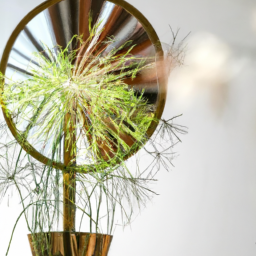
Popular Types of Indoor Plant Wall Art and Displays
Introduction
Indoor plant wall art and displays have gained immense popularity in recent years. They not only add a touch of nature to your living space but also create a visually stunning focal point. Whether you have a small apartment or a spacious home, there are various types of indoor plant wall art and displays to suit your style and space. In this article, we will explore four popular types of indoor plant wall art and displays that are sure to elevate the aesthetic appeal of your interior.
Living Wall Gardens
Living wall gardens, also known as vertical gardens or green walls, are a fantastic way to incorporate plants into your indoor space. These installations consist of an array of plants arranged vertically on a wall, creating a stunning living piece of art. There are two main types of living wall gardens: soil-based and hydroponic.
Soil-based living wall gardens use a structure that holds soil and allows plants to grow naturally. They are perfect for larger plants and those that require more water and nutrients. These types of living walls are relatively easy to install and maintain, making them a popular choice among plant enthusiasts.
On the other hand, hydroponic living wall gardens use a system that allows plants to grow without soil. Instead, plants are placed in containers or pockets filled with a nutrient-rich solution. Hydroponic living walls are ideal for smaller plants and those that thrive in a controlled environment. They require careful monitoring of water and nutrient levels but offer a sleek and modern look to any space.
Wall-mounted Planters
Wall-mounted planters are an excellent option for those who want to display their indoor plants in a more traditional way. These planters come in various shapes, sizes, and materials, allowing you to customize the look according to your preference. From ceramic and terracotta to metal and wood, there are endless options to choose from.
When selecting wall-mounted planters, consider the size of your plants and the available wall space. Some planters are designed to hold a single plant, while others can accommodate multiple plants. You can create a visually appealing display by arranging planters in a symmetrical or asymmetrical pattern on your wall. Additionally, consider the lighting conditions of the area where you plan to hang the planters, as different plants have varying light requirements.
Hanging Planters and Macrame
If you’re looking to add a touch of bohemian charm to your indoor space, hanging planters and macrame are the way to go. Hanging planters are suspended from the ceiling or wall, allowing your plants to cascade down and create a stunning visual effect. They are available in various materials, including ceramic, woven baskets, and glass, giving you plenty of options to match your interior style.
Macrame plant hangers, on the other hand, are handmade using ropes or cords and offer a more intricate and decorative look. These hangers can be hung from the ceiling or attached to a wall hook. Macrame plant hangers come in different designs and lengths, allowing you to create a unique and personalized display of your indoor plants.
When choosing hanging planters or macrame, consider the weight-bearing capacity of your ceiling or wall. It’s essential to ensure that the support can handle the weight of the planter and the plant. Also, consider the height at which you want to hang the planters, as different plants have different growth patterns.
Frame and Shelf Displays
Frame and shelf displays provide a creative way to showcase your indoor plants while adding a touch of elegance to your walls. These displays typically involve placing plants in frames or on shelves, creating a three-dimensional effect. They are perfect for smaller plants or those that do not require a lot of soil depth.
Frame displays involve placing plants in frames with a glass or acrylic front, allowing you to see the plants from all angles. You can choose frames of various sizes and shapes to create an eye-catching arrangement on your wall. Consider using frames with different depths to accommodate plants of varying sizes.
Shelf displays, on the other hand, involve placing plants on floating shelves or wall-mounted shelves. This allows you to create a dynamic and layered display by arranging plants at different heights. You can mix and match plant sizes and types to create a visually appealing composition.
Conclusion
Indoor plant wall art and displays offer a unique and captivating way to bring nature indoors. From living wall gardens to wall-mounted planters, hanging planters and macrame, and frame and shelf displays, there are endless options to suit your style and space. Consider the size of your plants, available wall space, and lighting conditions when selecting the right type of indoor plant wall art and displays. With a little creativity and care, you can transform your walls into vibrant and lush displays of botanical beauty.

Maintenance Tips for Indoor Plant Wall Art and Displays
Introduction
Indoor plant wall art and displays are a great way to bring the beauty of nature into your home or office. They not only add a touch of greenery to your space but also provide numerous health benefits. However, like any living thing, indoor plants require proper care and maintenance to thrive. In this article, we will provide you with some valuable tips on how to maintain your indoor plant wall art and displays, ensuring they remain healthy and vibrant.
1. Regular Watering
Watering is an essential aspect of indoor plant care. Different plants have different water requirements, so it’s crucial to understand the needs of each plant in your wall art or display. Generally, most indoor plants prefer slightly moist soil, but overwatering can be detrimental. Before watering, check the moisture level of the soil by sticking your finger about an inch deep. If it feels dry, it’s time to water.
When watering, make sure to do it thoroughly, allowing the water to reach the roots. Avoid letting the water sit in the tray or saucer beneath the pot, as this can lead to root rot. It’s recommended to use room temperature water, as cold water can shock the plants. Additionally, consider using a watering can with a narrow spout to avoid splashing water on the leaves, which can cause fungal diseases.
2. Proper Lighting
Light is another crucial factor in maintaining indoor plant wall art and displays. Most indoor plants thrive in bright, indirect light. Place your plant wall art or display near a window where it can receive ample natural light. However, be cautious of direct sunlight, as it can scorch the leaves of some plants.
If your space lacks natural light, you can supplement it with artificial lighting. LED grow lights are an excellent option as they provide the necessary spectrum of light for plant growth. Position the lights about 12 inches above the plants and keep them on for about 12-16 hours a day. Remember to adjust the lighting duration based on the specific light requirements of your plants.
3. Regular Pruning
Pruning is an essential maintenance task for indoor plant wall art and displays. It helps promote healthy growth, maintain the desired shape, and prevent the plants from becoming leggy or overcrowded. Regularly inspect your plants for any dead, yellow, or damaged leaves, and remove them using clean, sharp pruning shears.
You can also prune to control the size of your plants. If your wall art or display becomes too crowded, remove some of the plants to allow the remaining ones to thrive. Additionally, consider pinching back the tips of your plants to encourage bushier growth. Pruning should be done during the active growing season, usually in spring or early summer.
4. Fertilization
Indoor plants in wall art and displays benefit from regular fertilization. Fertilizers provide essential nutrients that may be lacking in the potting soil. Choose a balanced, water-soluble fertilizer specifically formulated for indoor plants. Follow the instructions on the packaging for the correct dosage and frequency of application.
During the growing season, typically spring and summer, fertilize your plants every two to four weeks. In the dormant season, reduce the frequency to once every two months. Be careful not to over-fertilize, as it can lead to nutrient burn and damage the plants. Always water your plants before applying fertilizer to prevent root burn.
5. Pest Control
Pests can be a common issue for indoor plants, including those in wall art and displays. Regularly inspect your plants for any signs of pests such as aphids, mealybugs, or spider mites. If you notice any pests, take immediate action to prevent them from spreading and causing damage.
There are various methods for pest control, depending on the severity of the infestation. For minor infestations, you can try wiping the leaves with a damp cloth or spraying them with a mixture of water and mild dish soap. For more persistent pests, consider using organic insecticidal soap or neem oil. Always follow the instructions on the product label and avoid using harsh chemicals that can harm your plants.
Conclusion
Maintaining indoor plant wall art and displays requires regular attention and care. By following these maintenance tips, you can ensure that your plants remain healthy, vibrant, and visually appealing. Remember to water your plants appropriately, provide them with adequate lighting, regularly prune them, fertilize as needed, and stay vigilant against pests. With proper maintenance, your indoor plant wall art and displays will continue to bring beauty and life to your space for years to come.
Frequently Asked Questions (FAQ)
1. What is indoor plant wall art and displays?
Indoor plant wall art and displays refer to creative ways of incorporating plants into the design of your indoor spaces, specifically on walls. It involves arranging and displaying plants in various artistic and decorative forms to enhance the aesthetic appeal of your interior.
2. How can I create an indoor plant wall art?
To create an indoor plant wall art, you can use different techniques such as vertical gardens, hanging planters, wall-mounted planters, or even DIY plant frames. These methods allow you to arrange and display plants in a visually appealing manner on your walls.
3. What are the benefits of indoor plant wall art?
Indoor plant wall art not only adds beauty to your space but also offers several benefits. It improves indoor air quality by filtering pollutants, increases humidity, reduces noise levels, and promotes a sense of well-being. Additionally, it can serve as a natural focal point and create a calming atmosphere.
4. Which plants are suitable for indoor plant wall art?
Several plants thrive in indoor plant wall art setups. Some popular choices include pothos, ivy, spider plants, ferns, succulents, air plants, and peace lilies. These plants are known for their adaptability to indoor environments, low maintenance requirements, and ability to grow vertically.
5. How do I take care of plants in indoor plant wall art displays?
Taking care of plants in indoor plant wall art displays involves regular watering, ensuring adequate sunlight or artificial light, and occasional fertilization. It’s essential to monitor the moisture levels, provide proper drainage, and trim any dead or wilted leaves to maintain the health and appearance of the plants.
6. Can I create an indoor plant wall art in any room?
Yes, you can create an indoor plant wall art in any room as long as you consider the lighting conditions and space availability. Some plants require more sunlight, so it’s important to choose a suitable location. Additionally, ensure that the wall can support the weight of the planters or frames.
7. Is indoor plant wall art suitable for small spaces?
Absolutely! Indoor plant wall art can be a great addition to small spaces as it allows you to utilize vertical space effectively. You can opt for compact planters or hanging planters that don’t take up much floor space. It’s a fantastic way to bring nature indoors even if you have limited room.
8. Can I create my own indoor plant wall art?
Yes, you can definitely create your own indoor plant wall art. There are numerous DIY tutorials available online that provide step-by-step instructions on creating different types of plant displays. It allows you to personalize your design and choose plants that resonate with your style and preferences.
9. Where can I buy indoor plant wall art and displays?
You can purchase indoor plant wall art and displays from various sources. Local plant nurseries, home improvement stores, and garden centers often have a selection of planters and wall-mounted plant displays. Additionally, online marketplaces and specialty plant shops offer a wide range of options to choose from.
10. How do I maintain indoor plant wall art in the long term?
Maintaining indoor plant wall art in the long term involves regular care and attention. Ensure you water the plants as needed, provide adequate light, and periodically check for any pests or diseases. It’s also beneficial to rotate the plants occasionally to ensure even growth and prevent any overcrowding.
Emily Bloomfield is an interior designer and horticulturist specializing in incorporating indoor plants into interior spaces. With a background in both design and plant science, Emily offers a unique perspective on creating harmonious living environments through the synergy of greenery and aesthetics. Her creative ideas and innovative solutions make her a sought-after authority in the field.

